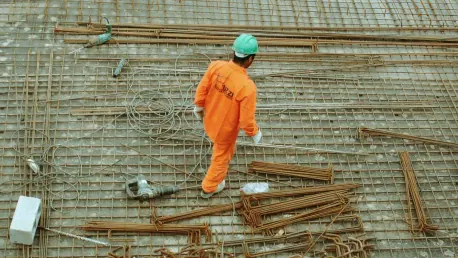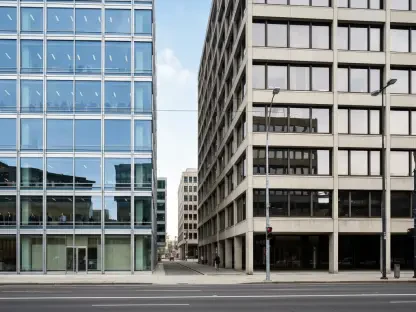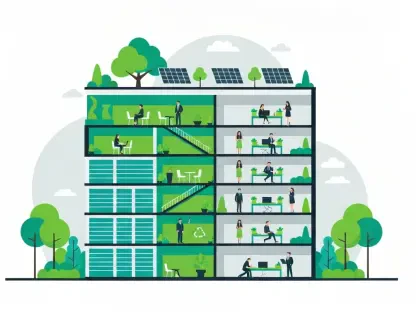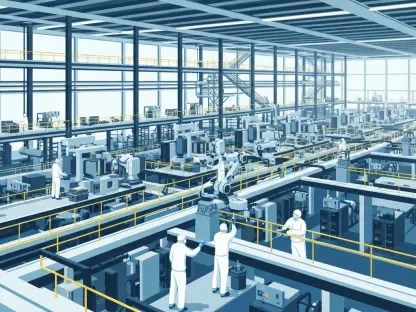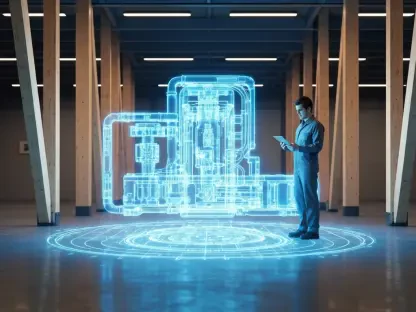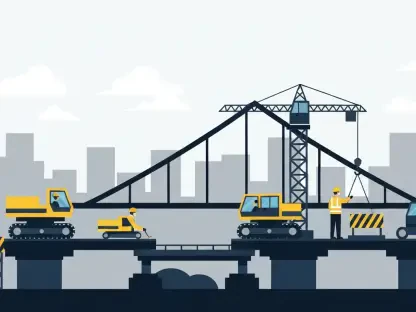The United States construction industry is grappling with a severe labor shortage, a crisis exacerbated by a significant number of undocumented workers, which makes the issue particularly urgent with the 2024 presidential election looming and its potential policy changes. Construction executives are working to find skilled labor while navigating the complexities of immigration reform and workforce training, a multifaceted challenge that underscores broader industry vulnerabilities. This labor shortfall is not merely a matter of worker availability but also encompasses issues of legality, ethics, and competitive fairness within the sector.
The Labor Shortage Crisis
The critical need for skilled labor in the construction industry is starkly evident, with immigrants entering the country illegally making up a substantial proportion of the workforce. A 2021 report from the Center for American Progress reveals that approximately 23% of the construction labor force consists of undocumented workers. The Pew Research Center also provides a lower but still significant estimate of around 15% for all construction workers. The reliance on undocumented workers highlights a tension between filling labor needs and upholding lawful employment practices. Brian Turmail, vice president of public affairs and workforce at the Associated General Contractors of America, articulates a central concern: “Nobody benefits from having a large pool of undocumented workers in the construction industry.” This situation permits unscrupulous contractors to exploit undocumented workers, thereby underbidding more responsible contractors who maintain ethical labor practices.
The labor shortage forces many contractors into a difficult position, where the necessity of completing projects pushes some toward hiring undocumented workers despite the legal and ethical risks involved. The current labor market’s tightness exacerbates these issues, creating an environment where exploitation becomes more feasible for those willing to ignore labor laws. This results not only in unfair competition but also jeopardizes worker safety and rights, perpetuating a cycle of inequity and legal instability within the industry.
Immigration Reform as a Solution
With the 2024 presidential election on the horizon, construction industry leaders are earnestly seeking legal pathways to strengthen their workforce, recognizing that immigration reform could be a critical component to resolving their labor woes. The Associated Builders and Contractors project a need for nearly 454,000 new workers by 2025, even when accounting for potentially slowed construction spending growth. This projection underscores the urgency for policies that can provide lawful avenues for workers to join the construction workforce and stabilize the labor market.
Anirban Basu, chief economist at ABC, underscores the necessity for structured programs to legally bring in skilled workers. He asks, “If we can figure out a way to deal with these 11 or 12 million undocumented migrants — is there a pathway to, if not citizenship, at least a work visa?” Basu’s viewpoint resonates widely within the industry, reflecting a broader call for policies that can regularize the status of undocumented workers and mitigate legal risks for both employees and employers. Such reforms could effectively address the current labor market’s imbalances while ensuring that businesses can operate within the bounds of the law.
The Role of the H-2B Visa Program
One of the promising areas of reform is the expansion of the H-2B visa program, which allows for the temporary employment of foreign workers in industries facing acute labor shortages, including construction. Kristen Swearingen, vice president of legislative and political affairs at ABC, contends that the current annual cap of 66,000 visas is insufficient to meet the industry’s needs. She advocates for a cap based on economic demand rather than a fixed number, suggesting that increasing the allocation of H-2B visas could substantially alleviate the labor shortfall.
The differing approaches of presidential candidates toward immigration also play a significant role. Vice President Kamala Harris is expected to continue the current administration’s efforts to expand legal immigration pathways, a stance evidenced by the Department of Homeland Security’s record allocation of 20,000 H-2B visas in 2023. Conversely, former President Donald Trump’s history indicates a more mixed approach to the visa program. While he increased H-2B visa numbers in 2019, he also suspended the program in 2020, citing economic protectionism during the COVID-19 pandemic. The uncertainty about future visa program restrictions is thus a critical consideration for industry stakeholders.
DACA and TPS Programs
The Deferred Action for Childhood Arrivals (DACA) and Temporary Protected Status (TPS) programs also hold significant implications for the construction industry. DACA provides deportation relief and work permits to individuals who were brought into the U.S. illegally as children, often referred to as “Dreamers.” Former President Trump attempted to terminate DACA in 2020, but Congress blocked this effort. It is anticipated that he may renew this endeavor if re-elected. Similarly, TPS, which offers temporary legal status to immigrants from crisis-stricken nations, faces vulnerabilities under a potential Trump administration. In contrast, a Harris administration would likely prioritize and protect DACA, continuing the Biden administration’s stance on immigration policy.
The fate of these programs is not merely a political issue but also a practical concern for the construction industry, which relies on these workers to meet its labor demands. The termination of DACA and TPS could remove a significant portion of the workforce, exacerbating the existing labor shortage and disrupting ongoing and future projects. Protecting and potentially expanding these programs is therefore seen as crucial for maintaining industry stability and growth.
Addressing the Skills Gap
The issue of labor shortage extends beyond mere numbers to include a significant skills gap in the construction workforce. Anirban Basu points out that the problem isn’t just the lack of workers but a shortage of skilled workers specifically. Addressing this skills gap requires comprehensive training programs designed to equip workers with the specialized skills needed in modern construction. The Associated General Contractors of America are actively engaging with legislators to foster bipartisan legislation that addresses both immigration and work authorization, suggesting solutions such as doubling funding for the Perkins Act, which supports career-technical education, and boosting federal funding for post-secondary construction training programs.
Currently, a considerable portion of federal funding is directed towards four-year degree programs, despite the fact that only 38% of Americans complete such degrees. This underscores a misalignment between educational funding and industry needs. By reallocating resources toward vocational training and technical education, the industry could develop a more skilled workforce, better equipped to meet the demands of contemporary construction projects.
Retaining Skilled Foreign Talent
The United States construction sector is facing a critical labor shortage, an issue worsened by the presence of many undocumented workers. This crisis is especially pressing as the 2024 presidential election approaches, bringing with it possible policy changes that could further impact the industry. Construction leaders are striving to secure skilled labor while also dealing with the complexities of immigration reform and workforce training. This multifaceted challenge reveals deeper vulnerabilities within the industry.
The labor shortage isn’t just a question of having enough workers; it also touches on legal, ethical, and competitive concerns. Companies are finding it increasingly difficult to hire qualified individuals, and the looming election adds layers of uncertainty to an already precarious situation. As the nation debates immigration policies and workforce regulations, the construction industry must adapt swiftly to stay competitive and meet demand.
Construction executives are not only addressing the immediate need for workers but are also looking at long-term solutions. This includes investing in training programs to build a more robust and legal workforce. The intersection of immigration issues and labor shortages highlights the urgency for comprehensive reform. It’s clear that resolving these challenges will require coordinated efforts across multiple sectors and policy areas.
